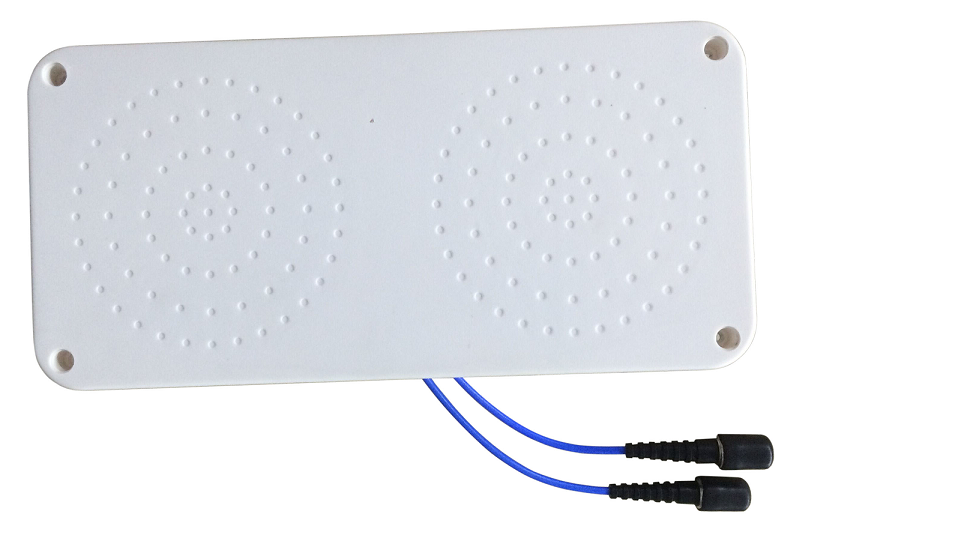
Indoor Omnidirectional MIMO Antenna 698-3800 MHz
₹1250.00₹750.00
### Indoor Omnidirectional MIMO Antenna: 698-3800 MHz
#### Introduction
In an increasingly connected world, the demand for high-performance antennas has never been greater. Among the various types of antennas available on the market, the indoor omnidirectional MIMO (Multiple Input Multiple Output) antenna operates within the frequency range of 698-3800 MHz, making it an essential tool for enhancing wireless communication in various environments.
#### What is an Omnidirectional MIMO Antenna?
An omnidirectional antenna is designed to receive and transmit signals equally in all horizontal directions. This characteristic makes it particularly suitable for indoor applications, where signals need to penetrate walls and reach devices from various angles. MIMO technology utilizes multiple antennas at both the transmitter and receiver ends, significantly improving data throughput and reliability by sending and receiving multiple signals simultaneously.
#### Frequency Range: 698-3800 MHz
The frequency range of 698-3800 MHz covers several important wireless communication standards, including LTE (Long-Term Evolution), 5G, and various Wi-Fi protocols. This broad spectrum capability allows a single antenna to support multiple devices and networks, streamlining installation and reducing equipment cost.
#### Key Features
1. **Broadband Performance**: A well-designed indoor omnidirectional MIMO antenna achieves broadband performance across its frequency range, allowing it to effectively handle multiple wireless standards in a single device.
2. **Signal Enhancement**: MIMO technology enhances signal quality by taking advantage of multipath propagation, where signals reflect off surfaces and arrive at the receiver via multiple paths. This can lead to improved speed and stability in data transmission.
3. **Compact Design**: Many of these antennas are designed to be compact, making them suitable for integration into various indoor environments without taking up excessive space.
4. **Easy Installation**: With versatile mounting options, including wall, ceiling, and desktop mounts, the installation process is straightforward, ensuring that users can quickly deploy their antenna solutions without hassle.
5. **Durability and Reliability**: Designed for indoor use, these antennas typically incorporate robust materials that offer resistance to wear and tear, ensuring long-term functionality.
#### Applications
1. **Smart Homes**: As homes become increasingly connected with smart devices, an omnidirectional MIMO antenna can provide seamless connectivity for devices like smart speakers, security cameras, and IoT sensors.
2. **Offices**: In corporate environments, such antennas improve communication between laptops, smartphones, and other networked devices, enhancing productivity and collaboration.
3. **Retail Spaces**: Retail locations can benefit from robust wireless connectivity, allowing for smooth operation of POS systems, inventory management software, and customer Wi-Fi services.
4. **Healthcare Facilities**: Hospitals and clinics require reliable, fast wireless communication for medical devices, patient management systems, and secure data transmission, making the use of these antennas invaluable.
#### Benefits of Using an Indoor Omnidirectional MIMO Antenna
- **Increased Capacity**: With MIMO technology, overall network capacity is enhanced, making it ideal for environments where multiple users connect simultaneously.
- **Better Coverage**: The omnidirectional pattern ensures that signals are evenly distributed throughout the room, reducing dead zones and areas of poor connectivity.
- **Efficiency**: Improving signal quality reduces the need for additional hardware, making these antennas both cost-effective and efficient for broader network setups.
#### Conclusion
The indoor omnidirectional MIMO antenna in the frequency range of 698-3800 MHz represents a significant advancement in wireless communication technology. It supports a variety of devices and standards, making it an invaluable asset in today’s connected environments. With features aimed at enhancing performance, ease of use, and installation, it is well-suited for residential, commercial, and industrial applications alike. As wireless technology continues to evolve, such antennas will be key in supporting the connectivity needs of the future.


